Ask any physician what’s draining their time and energy, and chances are they’ll mention their EMR. While electronic health records were designed to increase efficiency, they’ve too often become a symbol of burnout and bureaucracy—pulling attention away from patients and pushing paperwork late into the night.
For independent physician groups transitioning to value-based care (VBC), the administrative burden of poorly optimized EMRs can be a serious barrier to success. When digital tools aren’t aligned with clinical workflows, they don’t just slow you down—they siphon time from patient care, increase after-hours work, and chip away at morale. Instead of supporting transformation, they become one more system to navigate, one more demand to manage.
In a landscape where financial margins are tight and burnout is rising, that friction adds up. To succeed in VBC, practices need EMR systems that do more than store data—they need tools that amplify performance, streamline documentation, and support teams in delivering better care with greater ease.
At VBC Transformation Partners (VBCTP), we believe transformation shouldn’t come at the cost of clinician wellbeing. That’s why we help practices streamline EMR workflows—restoring autonomy, improving care quality, and reducing burnout.
Why EMR Optimization Matters in Value-Based Care
Electronic medical records should be an asset, but too often, they’re a hindrance. In fact, when properly optimized, EMRs can:
- Reduce documentation time by up to 25%
- Boost accuracy in risk scoring and coding
- Minimize click burden and screen fatigue, especially for high-volume providers
- Enable smarter population health tracking and care gap closure
However, the path to a high-functioning EMR isn’t just about new software. It’s about thoughtful configuration, workflow alignment, and user-centered design.
5 Proven Strategies to Reduce EMR-Related Burden
1. Streamline Templates and Smart Tools
The AMA and AAFP both recommend creating customized templates and smart phrases to reduce repetitive typing, speed up common documentation tasks, and increase billing accuracy. Standardizing workflows across pre-visit, visit, and post-visit phases enables more efficient care delivery, reduces after-hours work, and minimizes documentation backlogs.
2. Embrace Automation and Voice Recognition
Technology should lighten the load, not add to it. Automation tools—from auto-coding engines to hands-free dictation software—can significantly reduce the time clinicians spend on clerical tasks. Voice recognition technology allows for more natural, real-time documentation, helping providers stay focused on patients instead of keyboards.
3. Reduce Data Silos with Interoperability Solutions
True EMR optimization involves breaking down data silos. Integrating lab results, payer data, care management notes, and social risk factors into a unified system supports more coordinated care and reduces duplication. Interoperable platforms improve team communication and enable data-driven insights across the care continuum.
4. Apply Usability Redesign Principles
The ONC’s national strategy calls for a shift toward user-centered design: interfaces that match real clinical workflows, not just billing checkboxes. Redesigning EMR interfaces around clinician needs improves navigation, reduces cognitive load, and restores a sense of purpose and efficiency to the clinical day.
5. Align EMR Optimization with VBC Goals
To truly drive performance, EMR systems should be configured to support quality metrics, risk adjustment, and shared savings models. When documentation flows directly into dashboards, decision support, and automated triage tools, the EMR becomes a strategic asset rather than a daily drain.
A Physician-Led Solution That Works in Real Life
At VBC Transformation Partners, we don’t just provide tools—we partner with your team to implement practical, scalable solutions. We tailor every engagement to your pace, needs, and budget—with a focus on real-world results:
- Reduced administrative burden
- Lower staff burnout
- Higher quality metrics
- Increased revenue integrity
- Better patient and provider satisfaction
Why It Matters Now
In a healthcare environment where efficiency and equity are both urgent priorities, EMR optimization is not optional—it’s foundational. Independent practices deserve systems that work for them, not against them.
Whether you're preparing for downside risk, trying to reduce pajama time, or simply want to restore balance to your practice, VBCTP is here to help.
Ready to Work Smarter?
If you’re ready to stop guessing and start seeing what your practice could be—with less paperwork, stronger margins, and a care team that actually has time to care—check out our EMR and Practice Management Optimization Transformation. These real-world strategies aren’t just ideas; they’re tested roadmaps that have helped practices like yours reduce burnout, increase revenue, and improve outcomes across the board.
Ready to replace burnout with balance?
This isn’t a sales pitch. It’s an invitation to a no-pressure, no-fee conversation. Let’s take 30 minutes to imagine what’s possible. You bring the questions. We’ll bring the clarity.
